Those who arrive in Dolceacqua, an idyllic village of medieval origin in western Liguria, just a few kilometers from the border with France, will immediately find themselves in front of a true postcard image, especially if the weather is clear (a very frequent situation, in these parts) and the rays of the sun thus flood the village with light, making its magnificent colors stand out. In short, a postcard... live: the Nervia stream divides the village, but the two nuclei are brought together by the famous Ponte Vecchio, which leads those arriving from the main road to the oldest part, perched on a hill, which is dominated by the mighty bulk of the Doria Castle.
 |
| Panorama of Dolceacqua |
 |
| The church of Sant’Antonio Abate |
Following a narrow road that skirts the Nervia stream, we find ourselves in the main square in the lower part of the village: on one of the sides stands the majestic façade of the parish church of Sant’Antonio Abate, dating from 1471 but extensively remodeled during the 19th century, the period to which the three-aisle extension dates. The beautiful facade is decorated with the typical colors of these places, which we also find in other churches in the area: green and pink, which also characterize the sober but refined stuccoes of the interior. The statue of the titular saint, Anthony Abbot, shows off above the church portal. The tripartite facade features several motifs ofBaroque art, such as the advanced columns (topped by Ionic order capitals in the lower register), that is, protruding from the main structure, while still maintaining a certain sobriety. The interior also preserves a marvelous masterpiece of Ligurian Renaissance art: the Santa Devota Altarpiece by Ludovico Brea, the greatest Renaissance painter in these parts.
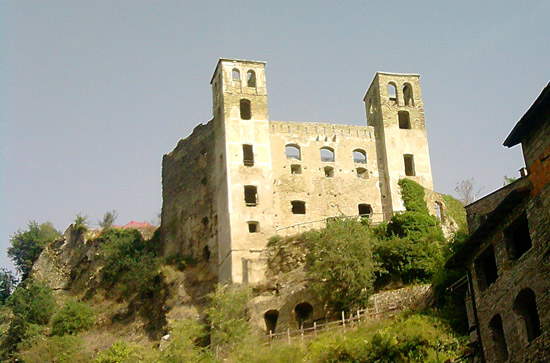 |
| The Doria Castle |
After visiting the church, we climb up one of the alleys leading to the castle. The rise is lined with stone buildings, many of them covered with creepers, and is full of artists’ workshops (and it is not hard to imagine why: the beauty, enchantment and tranquility of Dolceacqua inspire even the least vivid of imaginations), while wooden or wrought-iron signs of businesses hang outside the doors. At the steepest points, the cobblestones of the road turn into a flight of steps, and after a bit of walking we reach the Doria Castle. The fortification is first mentioned in the mid-12th century, when it was built by the Counts of Ventimiglia. In 1270 the castle was purchased by Oberto Doria, a member of the famous Genoese family and known to have been the admiral of the Genoese fleet that, on August 6, 1284, routed the Pisan ships at the Battle of Meloria, inflicting a very severe defeat on Pisa. The castle has seen battles during many centuries, given its strategic location. It was the scene of skirmishes during the clashes between Guelphs and Ghibellines, and after a period of tranquility between the 16th and 17th centuries, when it became the residence of the lords who ruled the fortunes of the town, which was part of the Republic of Genoa, it was subjected to a heavy siege in 1744: the French and Spanish fought against the Savoy, allies of the Genoese, during the War of Austrian Succession, and bombarded the fortress with their artillery, causing it severe damage. Today it appears to us as a mighty quadrangular structure, defended by two parallel towers at the corners: this is the appearance it took on during the 16th-century renovations.
 |
| One of the alleys of Dolceacqua |
We continue walking through the streets of the Terra district, which is developed in concentric circles following upward the development of the hill on which it was built. Often the buildings have considerable heights: not having much space to build horizontally, the ancient inhabitants often had the idea of developing the buildings vertically, which is why sometimes, even though we are in the middle of summer and in the central moments of the day, we do not see the sunlight, and certain slarches or certain corners of the village remain in semi-darkness. The advantage is that the heat is felt less!
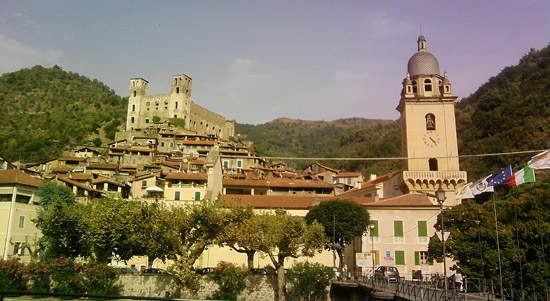 |
| Another beautiful view of Dolceacqua |
We return to the vicinity of the bridge, cross it to return to the less ancient part of the village. Here, in one of the small squares, there is a bronze statue depicting a shepherdess with a goat: the girl, caught in her fresh, young nudity, and the goat that turns toward her, constitute a tribute to Dolceacqua’s centuries-old shepherding tradition (goat with beans is a typical dish of the village).
A small village to be discovered immersed in peace and tranquility, where every corner possesses an extraordinary charm to be immortalized in a photograph, where the beauty lies precisely in the simplicity of everyday life. It will certainly not be a coincidence, if a painter like Claude Monet decided to stay several times in Dolceacqua, and to immortalize the village in some of his paintings... !
A beautiful view of Dolceacqua
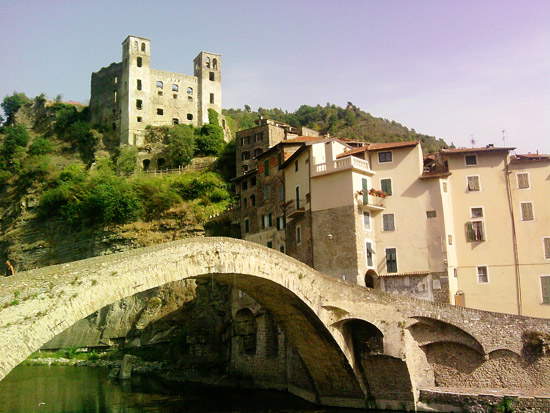
The oratory of San Filippo Neri
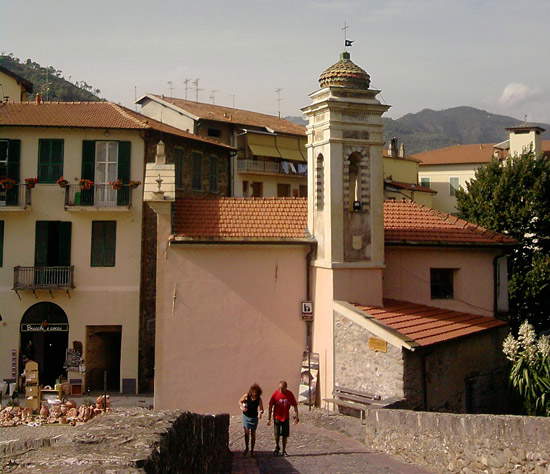
A panorama of Dolceacqua from the Ponte Vecchio, with the Doria Castle and the church of Sant’Antonio Abate
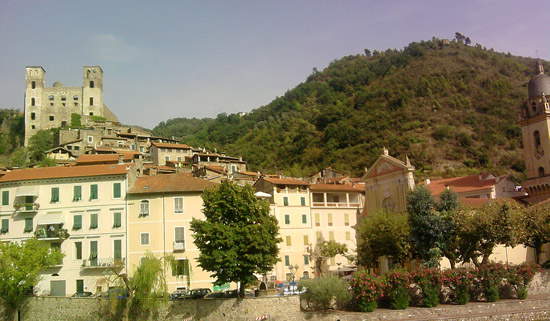
| An alley of Dolceacqua... | ... and another caruggio |
 |
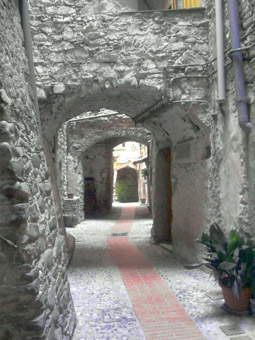 |
| Creepers shroud a building | Here is one of the village’s artist’s workshops |
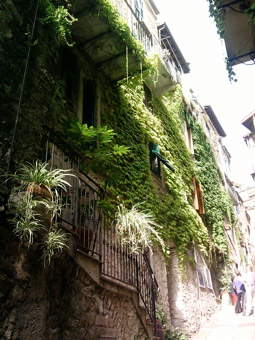 |
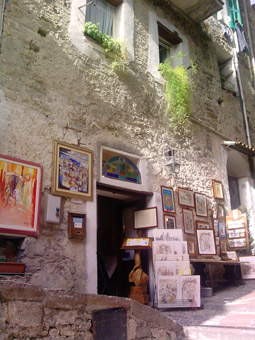 |
| One of the entrances to the Scasasse... | And one of its dark passages |
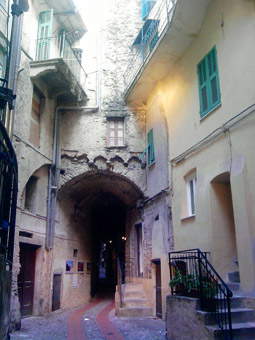 |
 |
| Photographs grace one of the caruggios of the Scasasse | The Eagle, symbol of Dolceacqua, on the pavement of an alleyway |
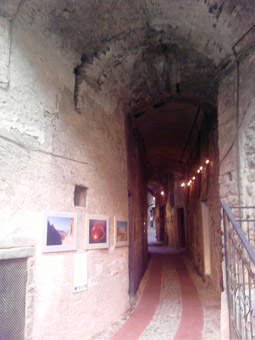 |
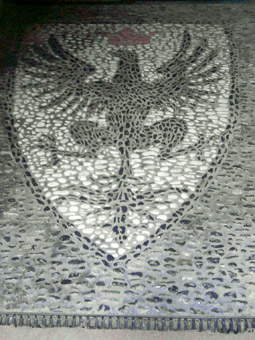 |
The bronze statue of the Shepherdess with the goat
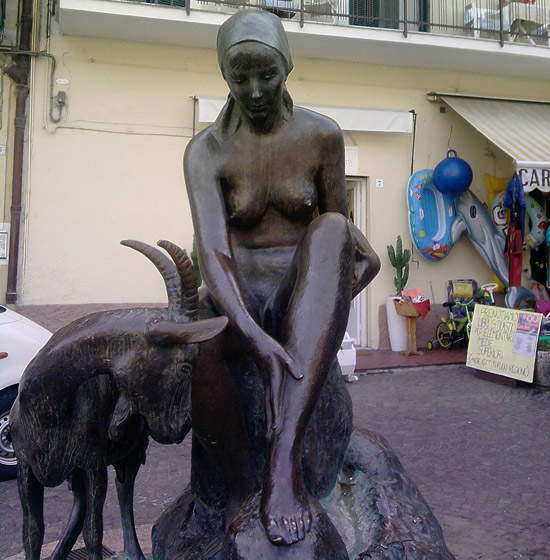
Piazzetta in the most recent part of the village, on this side of Ponte Vecchio

Another view of Dolceacqua with the Ponte Vecchio and the Doria Castle
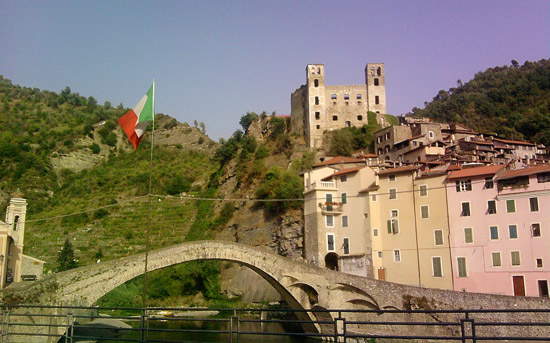
Claude Monet, The Bridge at Dolceacqua (1884; Williamstown, The Clark Art Institute)
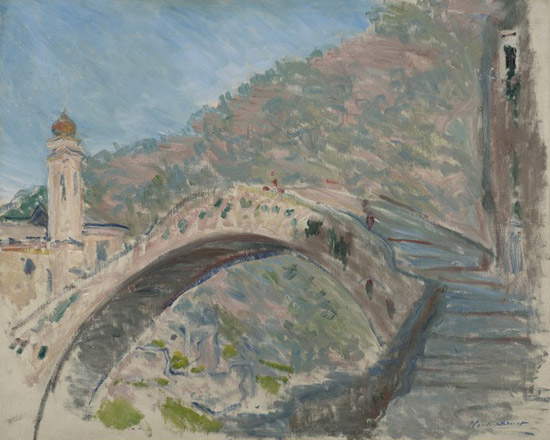
Warning: the translation into English of the original Italian article was created using automatic tools. We undertake to review all articles, but we do not guarantee the total absence of inaccuracies in the translation due to the program. You can find the original by clicking on the ITA button. If you find any mistake,please contact us.